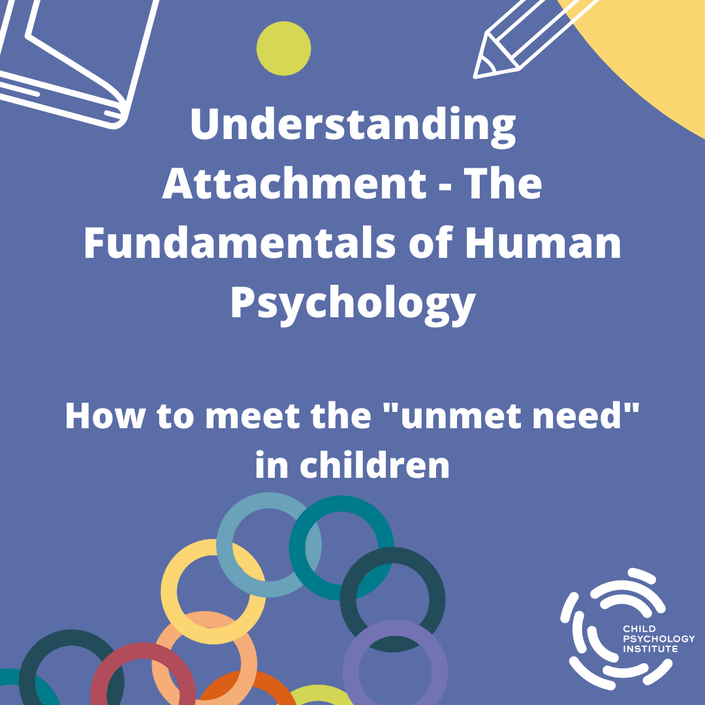
Understanding Attachment - The Fundamentals of Human Psychology
How to meet the "unmet need" in children
John Bowlby
Forming connections with others is as fundamental as needing food and water. Brain imaging shows that we “default” to social thinking when we are resting eg. what they meant when they said that, what will she think if I fail, what will I wear? From an evolutionary perspective, this “default mechanism” means socialization has been prioritized. This proves a link to survival! When social bonds are threatened or severed, we suffer greatly: the impact is equal to that of physical pain. Broken social bonds in childhood can lead to long-term health and educational problems. When it comes to children, meeting their needs for connectedness and attachment are foundational for healthy development. Taking the time to meet children’s needs when they are young will help reduce the behaviour that comes from having a need to unmet.
On this course, we will cover:
- What is attachment theory and why is it important?
- The history of child attachment theory
- The Strange Situation test
- The 4 key types of attachment in human psychology
- Influences on attachment styles
- Attachment and how this impacts us in later life
Your Instructor

Dr Lorraine Lynch is the Clinical Director of the Child Psychology Institute (CPI). She holds a Professional Doctorate in Health Psychology from London Metropolitan University (LMU) and is accredited by the HCPC and BPS. Her research thesis was based on the lived experience of children with Dyspraxia/Developmental Coordination Disorder (DCD) from the perspective of their parents. During her doctorate training, she completed placements in the private sector working on breastfeeding advocacy and support, and also within the NHS (Kidderminster Hospital, Birmingham) working on the promotion of digital health solutions. Dr Lorraine has won numerous awards within the social innovation and enterprise space, receiving a Social Entrepreneurs Ireland award in 2014, Enterprise Ireland's New Frontiers Award in 2021 and Network Ireland 'Power Within Champion' Award in 2022. Dr Lorraine is also the author of two books designed to promote children’s wellness - #100happydays4kids and Closing Saor’s Day.
Her most important role is a mother to three smallies, who serve as a constant reminder of how much potential exists within each child.
“Even the tallest trees always begin as a seed.” A. J. Darkholme
Course Curriculum
-
StartUnderstanding Attachment - Part One (35:16)
-
StartUnderstanding Attachment - Part Two (9:43)
-
StartHarry Harlow - Rhesus Monkey Experiment
-
StartUnderstanding Attachment - Part Three (23:42)
-
StartVideo - Attachment Theory: Understanding the Essential Bond
-
StartVideo - Attachment Styles
-
StartUnderstanding Attachment - Part Four (25:56)
